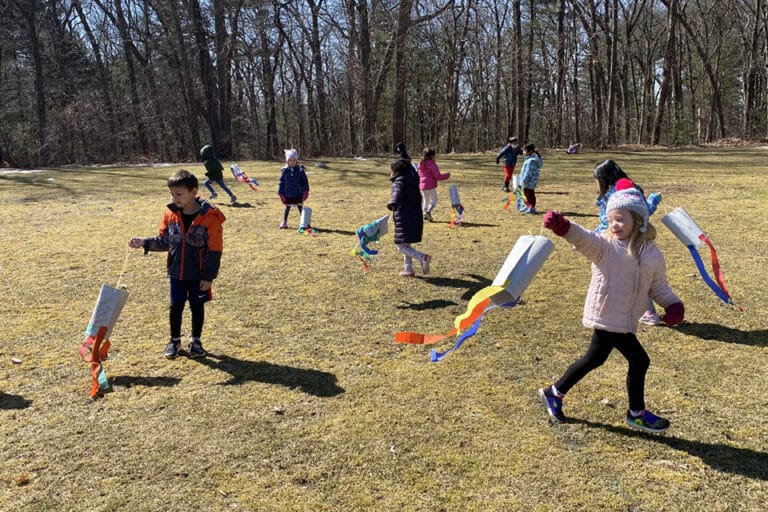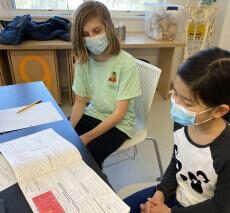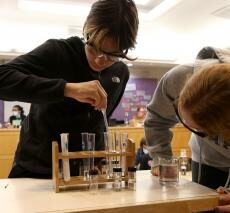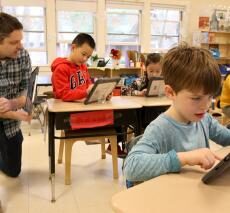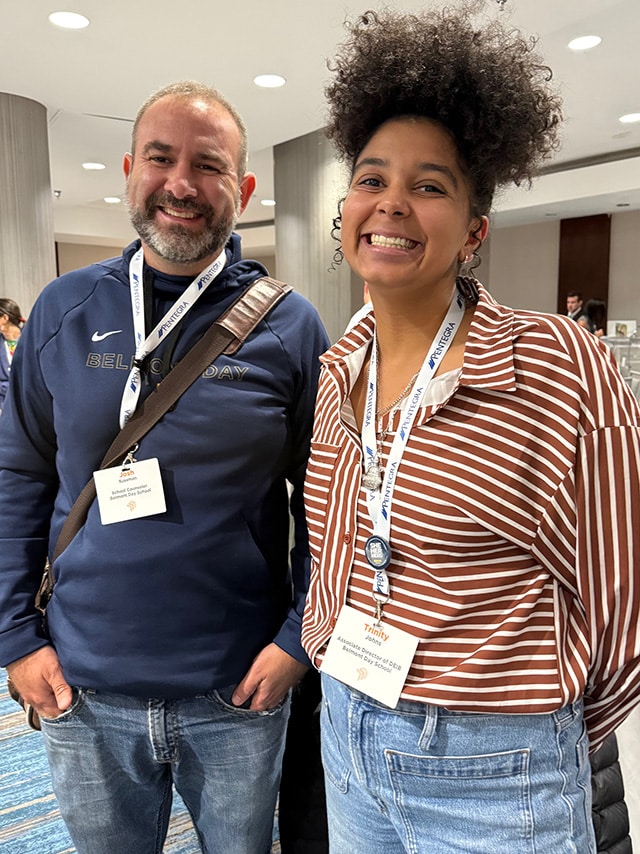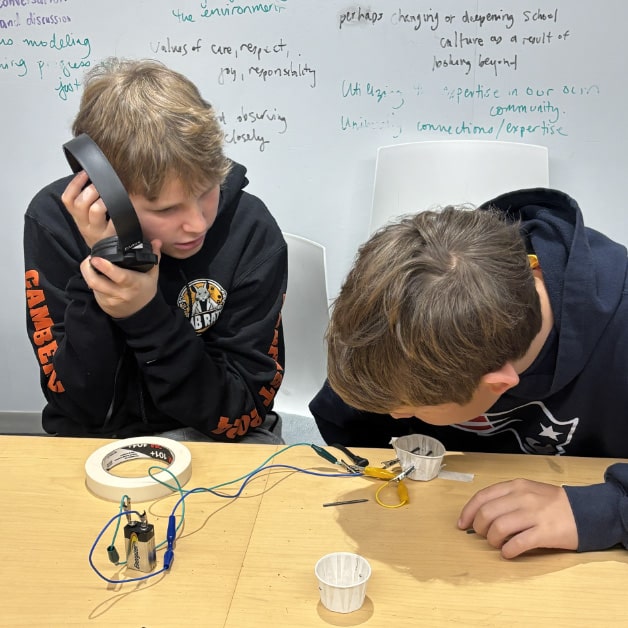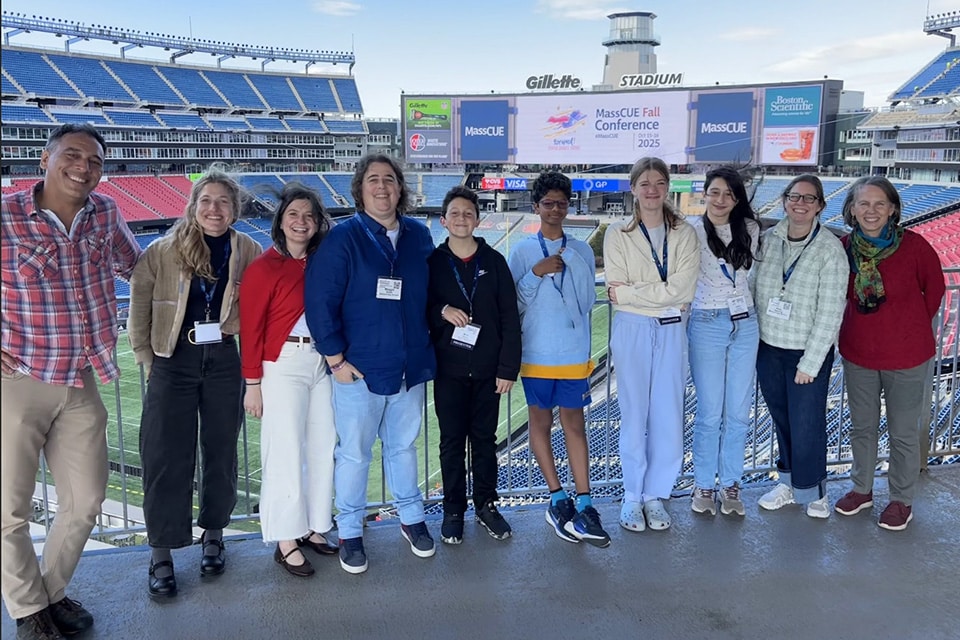Weather Report: It’s Cloudy and Breezy in Pre-kindergarten
Over the past two weeks, our pre-kindergartners have been learning about wind and clouds. We began by reading books about wind to learn what wind can do and how it changes. In the classroom, we used fans to experiment with different objects to determine what makes something easy for the wind to move. During our woodland walks, we collected natural materials and predicted which would be blown by the wind and which would not. Then we tested the natural objects. We learned that a light wind is known as a “breeze” and a big wing is known as a “gust’ or “gale”. We also created windsocks which we tested out on Claflin Field.
To start our unit on clouds, we have been looking at pictures of clouds and trying to match them to what we see in the sky. Once we identify a cloud, we also draw them with chalk. And after reading the book “It Looked Like Spilt Milk,” we painted pictures of clouds. Next, we’re looking forward to a science experiment with cotton balls and water to observe how raindrops gather in clouds and then release the rain!
– Nicole Siverls, pre-kindergarten teacher
Fifth Graders Interview BDS Community About Culture & Heritage
Fifth grade students in the language community and culture class are finishing a unit called celebrating community. In the unit, they welcomed members of the BDS community to interview about their culture and heritage. To create a booklet about the various cultures, they marked each visitor’s country on a map and researched about them on CultureGrams, gathering information. After each visitor conversation, students added notes to the page and compared what they found in CultureGrams with what they learned during the visits. They also researched their own culture and shared the information with a peer. At the end of the unit, students shared the booklet and gave feedback to peers. The students developed their interview and listening skills as they learned more about our BDS community. They seriously considered the similarities and contrasts between the information we learn from research and the information of lived experiences. Wrapping up the unit, students will put their learning into practice by creating games for their classmates to play.
– Ana Maria Restrepo and Jen Friborg, grade 5 language community and culture teachers
Eighth Grade Science Examines Elements
As a culmination to our unit on the periodic table and an introduction to our next unit on bonding and reactivity of elements, students in eighth grade completed an investigation this week, looking at the properties and reactivity of metals with both water and hydrochloric acid. Students observed which metals reacted faster than others, which metals created more exothermic reactions, and the differences in the visual observations for each reaction. Using the information gathered, students will discuss how the placement of the elements on the periodic table determines the rate at which each metal reacts. They will also look at the electronic structure of each metal to understand why some metals react faster or more violently than others.
– Sandra Trentowsky, middle school science teacher
First Grade Starts Programming on ScratchJr
First grade students were introduced to the program, ScratchJr, this week. We began by identifying the start of sequences in real-world scenarios and learned that sequences in ScratchJr need to start with the green flag. We also talked about how a sequence of commands has an outcome, and they made predictions based on the code of what the outcome would be.
– Kurt Robinson, innovation and art teacher
